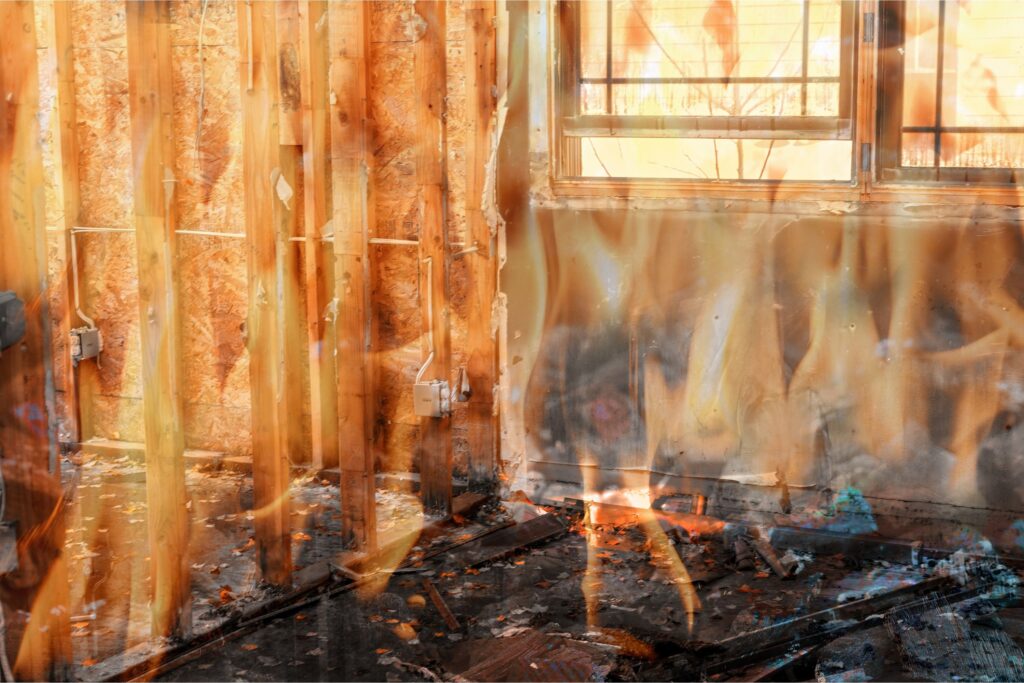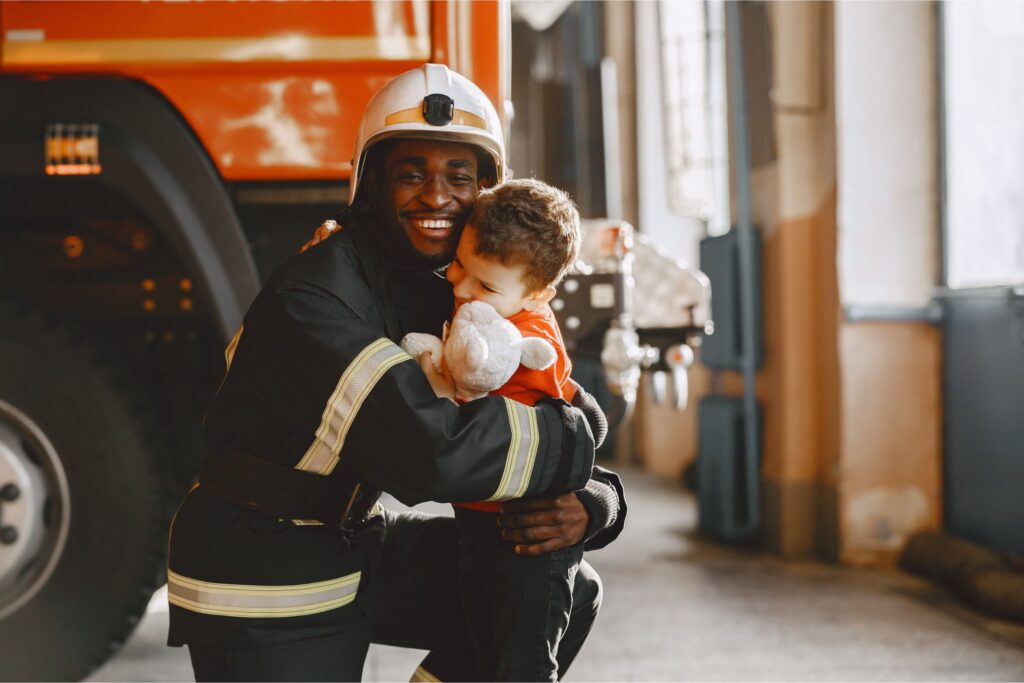Firefighters risk their lives to save the lives of many and, in doing so, this career brings many more health hazards than what is faced immediately on the job. Long Term health risks for firefighters are still being discovered and the outlook is not positive. From exposure to a litany of carcinogens, disrupted sleep cycles, and heightened levels of stress hormones on a regular basis, many firefighters are fighting more than just fires.
Gratefully, public institutions have taken notice of the potential long term negative effects of firefighting occupationally and have engaged in rigorous research to find ways to help keep our community heroes in the best possible health.
Among many different protocols that firefighters may engage in to help boost long term health, regular sauna therapy has shown promising positive benefits. In fact, the research is so compelling that some fire halls have saunas on the grounds for their firefighters.
In St Paul and Minneapolis, almost every single fire station has an infrared sauna installed. (1) Dr. Zeke McKinney, an affiliate professor at the University of Minnesota presents the importance of infrared sauna use for firefighters when he takes the public stage and says:
“There is immense scientific evidence about the health benefits of saunas, mostly cardiovascular benefits.” (1)
As you will read in the studies elaborated upon below there is substantial evidence to suggest that the resounding health benefits of infrared saunas on health are enough to warrant providing saunas to every firefighter as soon after direct exposure to a fire-call as possible as well as on a regular long term basis.
Far Infrared Sauna Use as a Portion of Post Fire-Call Decontamination Protocol
Firefighters wear an incredible array of armor to protect their bodies during a fire-call. Not only are the lungs subject to a variety of carcinogens, but the skin is also highly susceptible. After fire-call procedures require a wash down of all the gear in a highly technical and elaborate manner, as well as a washing of the skin and other body parts. To add to this already elaborate, yet potentially limited, post fire-call decontamination protocol, a study was conducted to determine the efficacy of infrared sauna use after the shower portion of the post fire-call procedure.

The purpose of using an infrared sauna after a fire-call was to see if there was further detoxification performed on the firefighters via the sauna that was not met with the other protocol. This study was published by the National Library of Medicine and demonstrated clinically substantial, but not significant results (meaning that there were certain variables such as the longevity of certain firefighters (years on the job) that prevented the study from being deemed ‘significant’, though the results were ‘substantial’). (2)
During this research performed on firefighters, far infrared saunas (some of the very same models sold by saunas.org) (2) were used. The study measured the urine sample of firefighters before and after a fire-call training session. Meaning the fire that was used for the study was one that is used in training firefighters and was not a real emergency.
The study divided the firefighters into 2 separate groups, the first of which all engaged in a 20 minute far infrared sauna session (temperature set to 120 degrees Fahrenheit) immediately after post contamination protocol. The study found the contamination of PAH-OHs in the urine of the group who took saunas was 40% less than the group who did not take a sauna.(2) This number is substantial and requires serious consideration for the health and well being of firefighters.

PAH stands for Polycyclic Aromatic Hydrocarbons, and according to the CDC (Center for Disease Control), PAH-OHs includes a group of carcinogens that can be detected in the urine of those who have been exposed to the following burning substances: Coal, crude oil, gasoline, wood, garbage, and tobacco.(3) Because of their prevalence in burned substances, all firefighters are exposed to PAH-OHs en masse during a fire-call. Therefore, measuring the levels of PAH-OHs before and after a fire-call will determine how much of the body has been exposed to these substances while on an emergency call, as well as the effectiveness of certain detoxification or decontamination protocol.
During studies and research on how to reduce firefighter’s exposure to certain toxins, the measurement of PAH-OHs is used routinely and is also used in the study referenced below: ‘Evaluation of Interventions to Reduce Firefighter Exposures’:
“Sauna treatment non-significantly reduced total mean PAH-OHs by −43.5% (95%CI −68.8%, 2.2%)…The standard deviation in urinary PAH-OHs was larger in the control than the sauna group… In addition, some fire departments are providing saunas for use after returning to the station post fire incident.” (2)
In towns such as St. Paul and Minneapolis, a radical decision was made to place a far infrared sauna into nearly every fire station as a portion of the post fire-call decontamination process. (1)
Furthermore, not only were far infrared saunas proven to aid in the immediate reduction of carcinogenic toxins within 12 hours after a fire-call, ongoing use of infrared saunas by firefighters was demonstrated to improve health in other facets as well.
Autonomic Nervous System Response to Far Infrared Saunas in Fire Fighters
A serious issue facing many first responders is the inability of the autonomic nervous system to recover back to a state of rest and relaxation after an emergency call, and this is true for firefighters as well. It seems it may be possible that saunas are important for firefighters to take, not only immediately following a call, but several hours or even days after an exposure event. Sauna utilization on an ongoing basis can positively impact the autonomic nervous system and encourage states of relaxation.
According to this publication: “Autonomic Nervous System Response to Far-Infrared Sauna Exposure in Firefighters”:
“Fire departments have employed far-infrared sauna (FIRS) use as part of post-fire call protocols to address concerns related to carcinogens. The inability of the autonomic nervous system (ANS) to fully recover following an emergency call, as demonstrated by heightened sympathetic nervous system activity and delayed parasympathetic nervous system reactivation, has been implicated as a potential factor related to sudden cardiac death.” (4)
There appears to be a need to not only include saunas as a portion of the post-contamination protocol, but also as a portion of regular and ongoing lifestyle protocol. There are a variety of thermal therapy options from heated yoga, hot baths, saunas, as well as cold plunges that all positively affect the function of the autonomic nervous system and should potentially be considered by firefighters.
Remaining in emergency response over prolonged periods of time is known to lead to a variety of health disturbances and it is therefore of vital importance that firefighters find effective means of supporting the autonomic nervous system so that homeostasis can be regained as quickly as possible after fire-calls.
The Long Term Cardiovascular Effects of Sauna Bathing On Fire Fighters
Further research has followed individuals in high stress careers over several years who have engaged in sauna bathing regularly, and there are demonstratively positive effects on overall health for these individuals particularly related to cardiovascular health. The chart below is from a publication by the National Library of Medicine: “The Cardiometabolic Health Benefits of Sauna Exposure in Individuals with High-Stress Occupations. A Mechanistic Review”. This chart helps to demonstrate why regular sauna use has such overridingly positive effects on health.
The chart to the leftdemonstrates that sauna bathing is at the center of a number of positive biochemical markers including: improved Heat Shock Protein production, lowered blood pressure, and uptake in Nrf2. This means that in addition to using a sauna as a means of cleaning the body’s system after a fire-call, firefighters will also benefit from regular sauna bathing as it has potential impacts on other health related issues. (5)
The same publication mentioned above goes on to advise the public sector that saunas should be provided for emergency workers as a means of protecting their long term health:
“Military personnel, first responders, police, and firefighters have an increased risk for developing CMD [Coronary Microvascular Dysfunction] due to the physiological and psychological stress linked to their respective occupations. Over time, chronic exposure to these stressors exacerbates underlying risk factors such as OS and inflammation and can ultimately result in early death. Although it would be fallacious to assume that a sauna intervention can replace the benefits offered by a sound dietary and exercise strategy, sauna bathing is a practical tool that interested individuals can implement to alleviate or mitigate CMD risk factors. For example, one–two sauna bathing sessions per week have been found to significantly decrease sudden cardiac death, coronary heart disease, and overall mortality rates. In a dose–response manner, additional (≥3) sauna bathing sessions can provide further protection to the cardiovascular system such as improved mitochondrial function, reduced inflammation, and an improved lipid profile. Additionally, three–seven sauna bathing sessions per week have demonstrated a ~50% reduction in cardiovascular disease development, risk of stroke, and risk of hypertension.” (5)
As is the case for civilians, beginning a sauna protocol for emergency workers is something that should be incorporated into a regular routine of 3-4 times per week at a minimum. Depending on the type of sauna that is used, each session should be for 20 minutes (traditional sauna) or for 45 minutes (infrared sauna). (5)
The evidence is in, and it is clear that we as a collective need to consider supporting our firefighters by making the information available surrounding health and sauna bathing, and hopefully the saunas themselves.
Continued Use of Saunas on an Ongoing Basis for FireFighters: A Public Discussion
The life of a firefighter is challenging for the individual who chooses this path, and it is also a life path that we all depend on for our safety as a society. Unfortunately, this comes at a cost, and the payment is the overall health of the firefighter. While regular sauna bathing is certainly not the only answer to enhancing the well being of firefighters, it is certainly one modality that has been researched significantly, and has demonstrated clinically substantial benefits to users.

Saunas.org offers the very same saunas that were used in scientific studies in post fire-call treatment for firefighters. (2) Hopefully, one day the rest of the nation will join St. Paul and Minneapolis and offer saunas at every fire station. Our small business wants to do our part to help make this a reality, so please reach out to us for a special discount for first responders – we thank you for your service and would love to support you!
To receive $250 USD off any sauna of your choice you can use this promocode: firstresponderthanks
Sources Cited:
- https://www.firerescue1.com/cancer/articles/minn-fire-stations-set-to-receive-saunas-to-help-study-occupational-cancer-EE6Fn5zKwJLOJQ1T/
- https://www.ncbi.nlm.nih.gov/pmc/articles/PMC8647371/
- https://www.cdc.gov/biomonitoring/PAHs_FactSheet.html
- https://pubmed.ncbi.nlm.nih.gov/34632485/
- https://www.ncbi.nlm.nih.gov/pmc/articles/PMC7908414/ ****************


